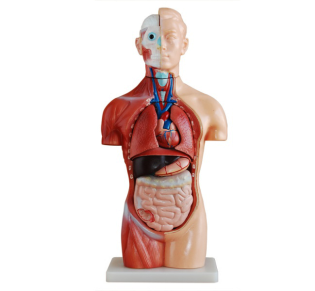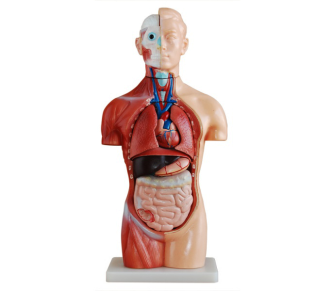ADA MED SUPPLY LIMITED
Phone:+86 19937901373
Tel:+86-0379-65160607
Email:adaanatomy@adaanatomy.com

Article tag: Asexual Trunk Model Medical Trunk Anatomy Model BIX-A1047

The importance of asexual torso model in basic medical education should not be underestimated, mainly reflected in the following aspects:
1. Visually display the human body structure
The asexual torso model displays the various organs and systems of the human body in a three-dimensional manner, enabling students to more intuitively understand and master the anatomy of the human body. Unlike traditional books and 2D images, models provide a three-dimensional perspective to help students gain insight into the location, morphology and interrelationships of individual organs.

2. Improve learning efficiency
Studies have shown that students who use models to learn anatomy learn more effectively than those who rely solely on lectures and diagrams. By manipulating and touching the models, students can gain a clearer grasp of the details of the human body, helping to remember and understand complex physiological and anatomical content. Data show that hands-on participation can improve the depth of students' understanding of knowledge and the persistence of memory.
3. Promote the cultivation of practical skills
In basic medical education, it is very important to develop students' practical skills while understanding theoretical knowledge. The asexual torso model provides a safe, repeatable practice environment where students can become familiar with human anatomy through repeated manipulation and practice skills such as correct body placement and organ identification.
4. Lay the foundation for clinical training
As a basic tool of medical education, asexual torso model helps students master anatomy knowledge and lay a solid foundation for future clinical training. Through the study of models, students are able to understand and apply anatomical knowledge more quickly in the clinic, thus improving the accuracy of diagnosis and treatment.
5. Enhance teaching interaction
Asexual torso model can increase interactivity in teaching. Teachers can intuitively explain the functions and positions of human organs through models, and students can directly participate in them, ask questions and operate them. This kind of interactive learning helps to enhance students' learning interest and motivation.
Data support
According to a study of the use of medical education tools worldwide, 80 percent of medical education institutions use anatomical models as an essential teaching tool. The asexual torso model, in particular, not only provides students with a detailed structural display, but also helps them accurately judge various parts of the human body during clinical operations.
To sum up, the asexual torso model plays a crucial role in basic medical education. It not only improves the learning efficiency, promotes the cultivation of practical skills, but also provides a valuable foundation for the clinical training of students.